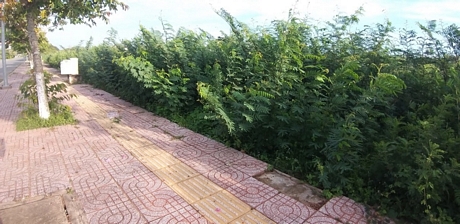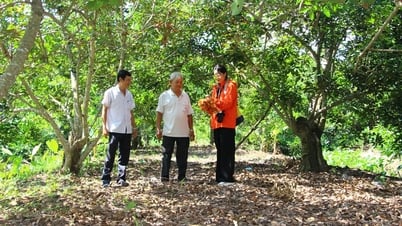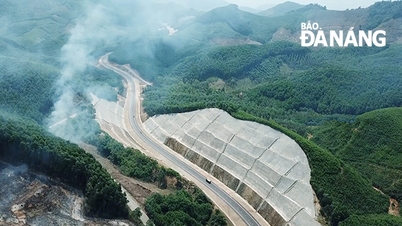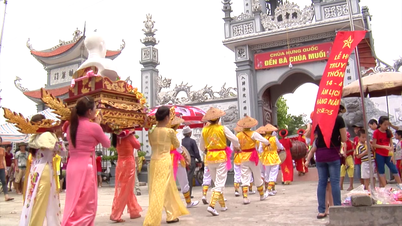 |
| Green mimosa trees grow along Vo Van Kiet Street, Ward 9, Vinh Long City. |
(VLO) Since the beginning of the rainy season, on both sides of Cai Cam 2 bridge as well as on undeveloped plots of land on Vo Van Kiet street (Ward 9, Vinh Long city), many mimosa trees have appeared, covering the roadside with green, with a height of over 1.5-2m.
According to the open encyclopedia Wikipedia, the Mimosa pigra, also known as the brown mimosa, the swamp mimosa, is a plant species belonging to the genus Mimosa, the subfamily Mimosa of the legume family. This species originates from tropical South America, and has appeared frequently in our country in recent years.
This is a perennial shrub that often grows in open, moist soil and can grow quickly after being cut down.
The tree can grow up to 4m high, divided into many branches, the trunk and branches have many sharp thorns, when fresh it is very brittle but when dry it is very tough and hard, difficult to burn. In areas invaded by this tree, other native plants have difficulty competing and are gradually destroyed.
The appearance and invasion of mimosa trees are becoming a threat to riverside and roadside areas. Wherever they grow, the flora there will be destroyed, insects cannot eat the leaves, birds do not dare to land, and animals do not dare to come near.
In addition, the mimosa tree also makes the soil poor in nutrients, negatively affects and risks destroying flora and fauna because the tree contains mimosin (an amino acid that can be toxic to many types of plants).
When the mimosa tree dies, it decomposes, creating toxins that pollute water sources... The tree also contains an itchy compound: the essential oil of urushiol. This oil is very toxic, often floating in the air and condensing on plants,...
Mimosa is a wild plant with strong vitality, spreading quickly through seeds, especially with the ability to regenerate by the trunk and roots is very large. If people cut down the mother tree and burn it, from the base of the mother tree will regenerate 4-5 young shoots; if burned, the seeds will germinate with a density of 15-120 plants/m2.
The Mimosa tree has a strong invasive ability, especially growing very quickly in height and speed of 1cm/day, can flower and bear fruit after 6 months. On average, a Mimosa tree flowers 12 times/year, each time producing 6,000-9,000 seeds with a geometric progression, the germination rate is very high.
The seeds of the mimosa tree have a layer of hair that can float on the water surface, easily spreading over a large area during the rainy season. In particular, if the seeds are boiled or burned, they can still germinate and grow plants after about 20 years.
With such harmful characteristics, since 2000, the International Union for Conservation of Nature has ranked the mimosa tree as one of the 100 most serious invasive alien species in the world .
According to the Plant Protection Institute (under the Vietnam Academy of Agricultural Sciences), there are three basic measures to kill mimosa trees: manual, chemical and biological; of which biological measures have been carried out in Australia, Thailand... such as releasing seed borers, stem borers, and tree top borers, but so far, they have not been applied in our country.
According to research from Tram Chim National Park (Dong Thap), there are 5 types of chemicals suitable for killing mimosa trees according to each growth cycle: glyphosate, truyclopyr, paraquat, metsulfuronmethyl and 2,4D.
In addition, according to the recommendations of experts, the seeds of the mimosa tree fall down, follow the water to where they stay, the tree will grow there. Therefore, it is necessary to destroy them before they are old and before the rainy season to limit germination and growth. If necessary, chemicals can be used at the permitted concentration.
I think, if we do not destroy immediately and have a fundamental solution for the mimosa trees in Ward 9 as well as some other localities in a timely manner, with the current quantity, in the coming time they will spread, making it even more difficult to destroy and more harmful to the environment.
Article and photos: HOANG VIET
Source link




























































































Comment (0)